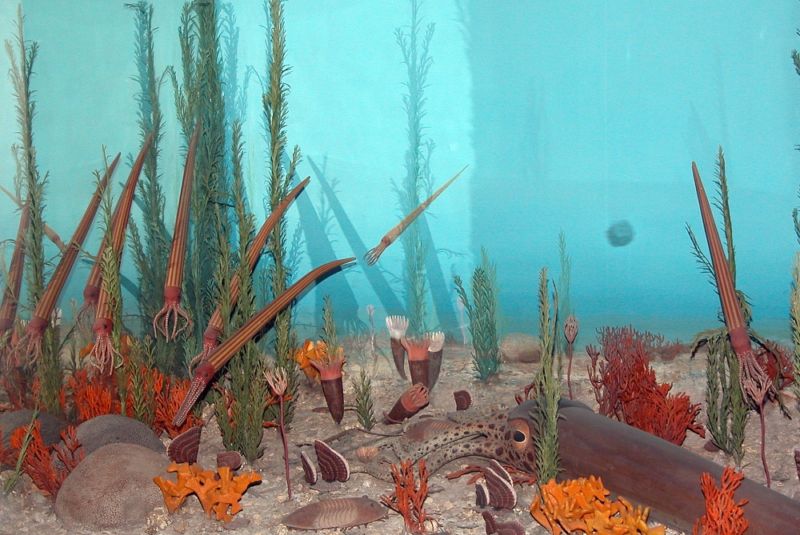If you liked the Cambrian Explosion, you’ll love the Ordovician Radiation

Enlarge / During the Ordovician, life was literally great. Multicellular plants and animals diversified and moved into ecological niches throughout the globe. This is probably what it was like on a typical Ordovician day, hanging out with cephalopods, crinoids, and coral at the edge of a supercontinent that covered the South Pole. I think a colony of graptolites is floating in the distance. (credit: Fritz Geller-Grimm)
Over half a billion years ago, during the Cambrian geological period, life on Earth started to get a lot more interesting. Thanks to the rise in free oxygen generated mostly by photosynthesizing algae, lifeforms could draw much more energy out of the environment. That meant the rise of multicellularity and the beginnings of a world full of the macro-sized plants and animals we know and love. That moment, full of weird-ass animals like Anomalocaris, is called the Cambrian Explosion.
The Cambrian Explosion gets a lot of play because it was the first time multicellular creatures ruled the planet. What few people (other than geologists and paleontologists) realize is that there was an even crazier time for early life. It came during the Ordovician period, right after the Cambrian came to a close 485 million years ago. The Ordovician Radiation, also called the Great Ordovician Biodiversification Event (GOBE), saw a quadrupling of diversity at the genus level (that's the category one step above species). Life also started occupying new ecological niches, clinging to plants floating in the ocean's water column and burrowing deep into the seabed.
Like the Cambrian, the Ordovician was a period when all of life still existed underwater. Most of the continents had formed a supercontinent called Gondwana over the south pole, creating the largest tropical coastline in our planet's history. (There were no polar ice caps during this period.) The warm coastal waters surrounding Gondwana were perfect for new kinds of animals, like brachiopods, crinoids, ostracodes, cephalopods, corals, and bryozoans. Plus, everybody's favorite Cambrian animal, the trilobite, diversified like crazy and moved into many new habitats during this time.
Read 6 remaining paragraphs | Comments